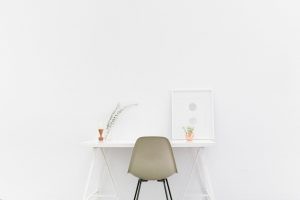The ultimate Minimalist’s minimalism
I have yet to be asked to clear a minimalist home, I assume because there are not enough items in one to warrant assistance.

Minimalism is not just hiding possessions in a cupboard and keeping all the flat surfaces clear, nor even limiting the number of possessions you have. According to https://www.theminimalists.com/minimalism/ minimalism is a tool to achieve freedom. Being conscious of where our energy is spent enables focus on those things which are truly important to us, ridding ourselves of discontent and making the space to follow our passions and achieve meaningful outcomes. As The Minimalists say, “Today’s problem seems to be the meaning we assign to our stuff: we tend to give too much meaning to our things”.
Minimalism is a path rather than a goal. By choosing to limit with the things you really need rather than buying into consumerism, you avoid distractions and free up both time and money, allowing yourself to live with intentionality, according to Joshua Becker.
As a consequence of this philosophy, a minimalist will most likely have fewer possessions. Exercising choice about what to value enables us to claim our lives for ourselves rather than centring our efforts on caring for things.
So, how about the world of non-existent things? Or at least, “virtual” things?
Last month a non-fungible token (NFT) sold at Christie’s for $69.3 million with fees. The artwork, “Everyday – The First 5000 Days”, is a digital artwork of Mike Winkelmann’s daily art posts since 2007. An amazing feat, and an interesting work of art.
Since NFTs provide proof of ownership through blockchain technology, artwork in particular has adopted the NFT space. As Noah Davis of Christie’s put it, the sale of NFTs is a “really attractive opportunity” in the art auction world, given the reduced or lack of costs for transportation, storage, photography and cataloguing, and insuring.
So, are NFTs an option for reducing the drag of possessions? After all, we can now have virtual art, music, basketball cards, even sneakers and hoodies.
Minimalism does not preclude possessions, but connects intentionality with ownership. Owning “virtual” possessions is the same in a minimalist’s life as owning analogue possessions. The test should surely be: do I need this?

